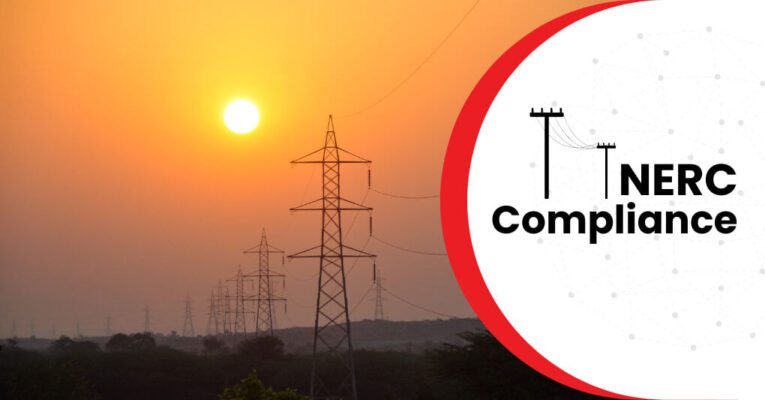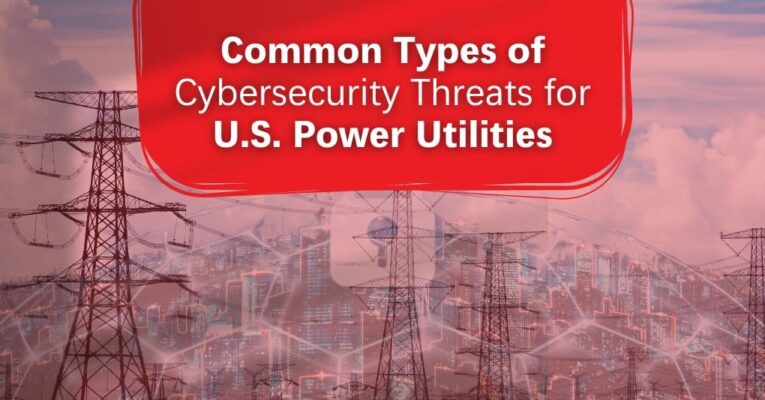The United States power grid is a critical infrastructure that is often overlooked, until disruptions occur. Today, it grapples with numerous issues, from aging infrastructure to severe weather events caused by climate change – ultimately leading to power outages that can pose threats to the nation’s health and safety, as well as economic activities. What’s more, with the energy landscape becoming more dynamic by the day, it is vital for us to reassess how we produce, manage, and distribute electricity.
With increasing reliance on renewable forms of energy such as wind and solar, traditional power grids today are straining to keep up. What’s more, the emergence of prosumers (consumers who produce their own energy) and diverse energy producers is making the energy sector more complex and nuanced, creating the need for innovative processes and management strategies.
In this blog, we will delve into the potential of future-ready technologies such as artificial intelligence (AI) and big data to modernize the century-old grid.
Infusing Artificial Intelligence (AI) into the Power Grid: A Balanced Take
In a world increasingly reliant on technology, artificial intelligence emerges as a key player in reshaping energy operations. From optimizing day-to-day management tasks to revolutionizing decision-making processes, AI holds immense potential for boosting efficiency and offsetting energy consumption. The integration of artificial intelligence (AI) promises a paradigm shift in optimizing grid operations, fostering renewable energy integration, bolstering grid resilience, and ensuring cybersecurity.
Cloud-connected AI technologies, including machine learning, data analytics, and the Internet of Things (IoT), also herald a new era for smart grids. Capable of managing intricate power generation and distribution, these technologies present a transformative opportunity for those within the energy ecosystem.
On the flip side, integrating AI into the power grid brings forth a host of challenges, including operational complexities and cybersecurity concerns. However, the potential opportunities are equally compelling, ranging from optimized grid operations to enhanced renewable energy integration and improved resilience.
The Need for Big Data in the Energy Sector
When it comes to customers and utilities, the significance of technologies capable of gathering and managing vast and diverse sets of big data extends beyond mere data handling. The true value lies in the capacity to harness and comprehend this wealth of information, utilizing it to optimize power consumption and streamline operations. Complementing AI, Big Data can be a pivotal force in:
- Integration of Renewable & Alternative Energy
The effective integration of renewable and alternative power sources hinges on the ability to predict and manage intermittence. Big data plays a crucial role in balancing the diverse and often small inputs from prosumer players, contributing to a more resilient and sustainable energy landscape. - Enhancing Outage Forecasting
Anticipating outages and swiftly redirecting resources before disruptions occur is paramount in safeguarding consumers. Big data enables utilities to predict potential issues and take proactive measures in a fraction of a second, minimizing downtime and enhancing reliability. - Cost Saving
The digital assimilation of insights gained from past activities empowers companies to learn and adapt. By leveraging this intelligence, utilities can better manage and automate day-to-day activities, leading to cost savings for both companies and consumers. - Quick & Informed Decision-Making
In the dynamic and competitive energy environment, the ability to provide fast, actionable insights is crucial. Big data equips utility companies with the tools to make confident and rapid decisions, ensuring they stay ahead.
Applications of AI in Power Grids
Now that we’ve made the case for positive consideration of AI in power grids, let’s delve into the primary opportunities presented by integrating artificial intelligence in utilities and how it can enhance efficiency while mitigating energy consumption.
1. Grid Optimization
The U.S. power grid is undergoing significant transformation with the integration of AI, particularly in optimizing grid operations. AI algorithms analyze real-time and historical data, including advanced sensors, communication technologies, weather patterns, and consumption trends. This optimization includes enhanced energy demand forecasting and predictive maintenance systems that anticipate equipment failures. In this scenario, AI-driven strategies can help balance energy supply and demand, reduce wastage, and enhance overall grid reliability.
2. Grid Security & Resilience
Artificial intelligence fortifies the security and resilience of the U.S. power grid against various threats, such as natural disasters and cyber-attacks. Real-time data analysis from weather sensors, grid sensors, and security monitoring systems enables AI to continuously monitor the grid’s condition. It quickly detects anomalies and potential cybersecurity breaches, ensuring a proactive response to threats.
3. Energy Efficiency
The integration of AI into U.S. power grids offers opportunities to improve energy efficiency significantly. By understanding demand patterns and consumer behavior, AI recommends strategies to shift energy usage to off-peak periods or reduce consumption during peak times. This demand-side management approach balances energy supply and demand, reducing strain on the grid, minimizing wastage, and optimizing the need for additional power generation capacity.
4. Energy Management
AI-driven energy management in buildings is a key application for optimizing energy consumption. After the data is gathered and analyzed, the algorithm reveals the plan of action to adjust HVAC and lighting systems for maximum energy efficiency. For example, AI ensures heating or cooling only when occupancy occurs, leading to significant energy savings. This application contributes to overall energy optimization and efficiency in building operations.
5. Customer Services & Engagement
The adoption of chatbots powered by artificial intelligence is transforming customer service in the energy sector. Chatbots assist customer service departments in resolving issues, engaging with customers, and providing quick assistance, enhancing customer engagement, satisfaction, and issue resolution. By utilizing artificial intelligence for customer services, utilities can nurture better relationships.
6. Energy Trading & Pricing
AI algorithms play a crucial role in energy trading and pricing markets, offering utilities the ability to optimize trading strategies based on more accurate forecasts. By analyzing data, AI provides insights for bulk energy supply, enabling utilities to make informed, real-time decisions and maximize profitability. This application ensures efficient energy trading, pricing, and decision-making in the dynamic energy market landscape.
The integration of artificial intelligence into these diverse applications highlights its transformative impact on U.S. power grids, contributing to optimization, security, efficiency, and enhanced customer engagement.
Unleash the Potential of Artificial Intelligence with GRIDsentry
The power grid stands at the brink of a monumental transformation fueled by the integration of artificial intelligence. As we navigate the challenges posed by aging infrastructure, shifting energy landscapes, and the rapid evolution of technology, AI emerges as a catalyst for positive change.
By addressing challenges head-on and leveraging the vast opportunities artificial intelligence presents, we can forge a path toward a more efficient, sustainable, and intelligent power grid.
Fortify your power substation with GRIDsentry’s state-of-the-art solutions – from defensive deception to AI-powered intrusion protection and detection.


